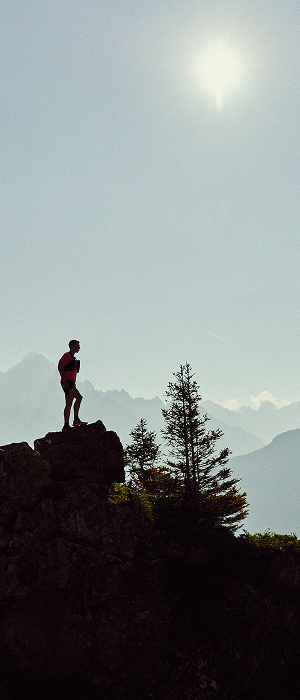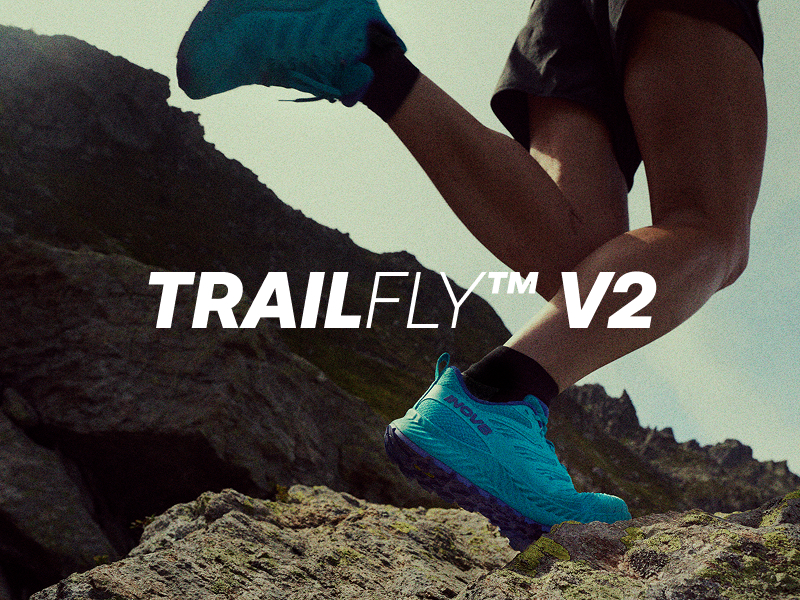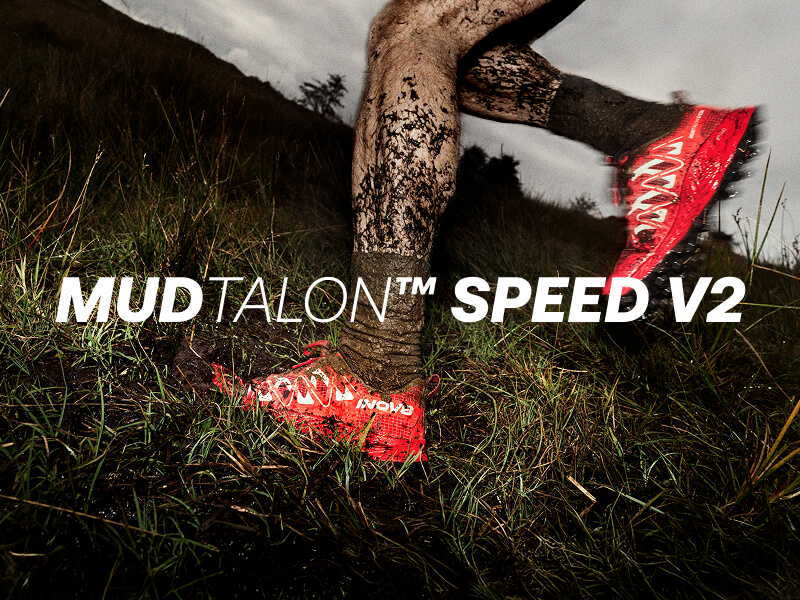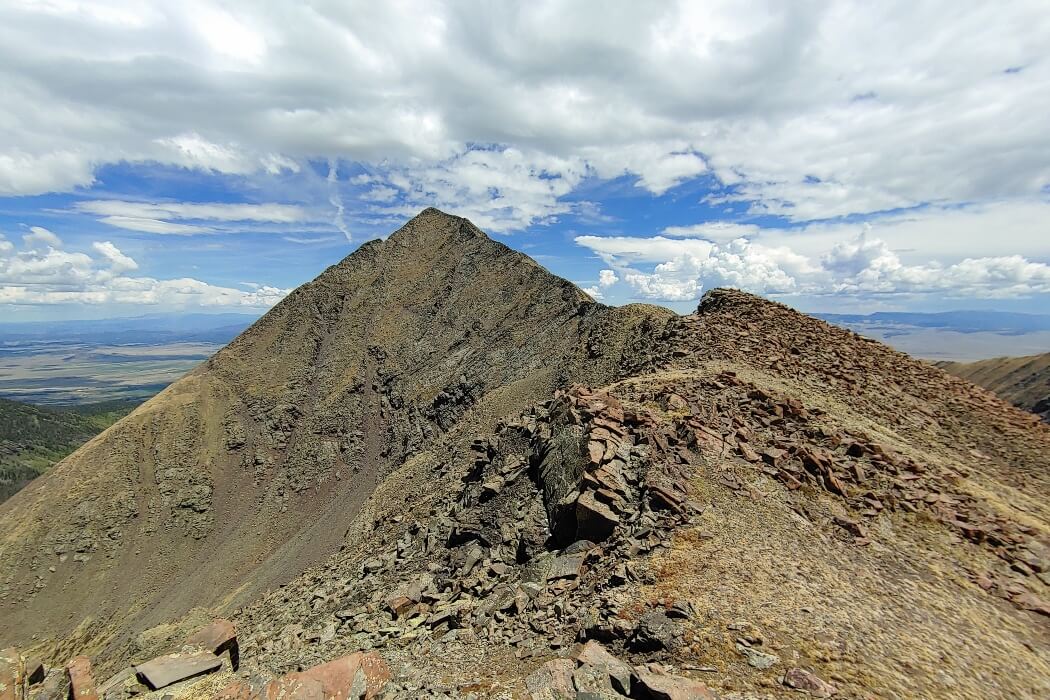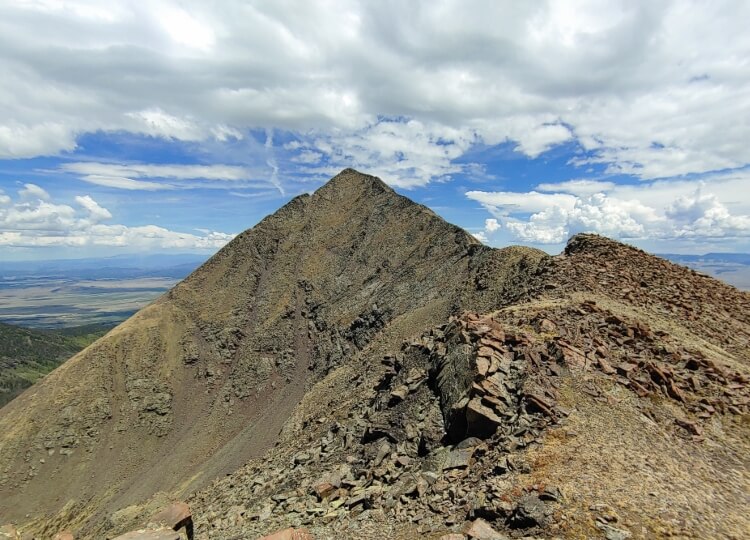
Depending on whom you ask and depending on what that person believes it takes for a mountain to be a "real mountain" as opposed to an imposter, Colorado has somewhere between 4,400 and 5,000 individual summits. That's enough to last your typical hiker several lifetimes over. Accepting the low figure of 4,400, one would have to climb one mountain a week for 85 years to reach all of them.
Considering I have now summited 800 Colorado mountains, it was a keen challenge for me to decide which ten of those 800 rank among my very favorites. From the state's modest 8,000-foot desert peaks with their rugged canyons, blooming cactuses, and assured solitude to the state's 14,000-foot alpine peaks with their airy ridgelines, treacherous boulder slopes, and year-round snowfields, I assure readers that any peak in Colorado is worth climbing. Here are some of my choicest Centennial State summits.
1. BISON PEAK
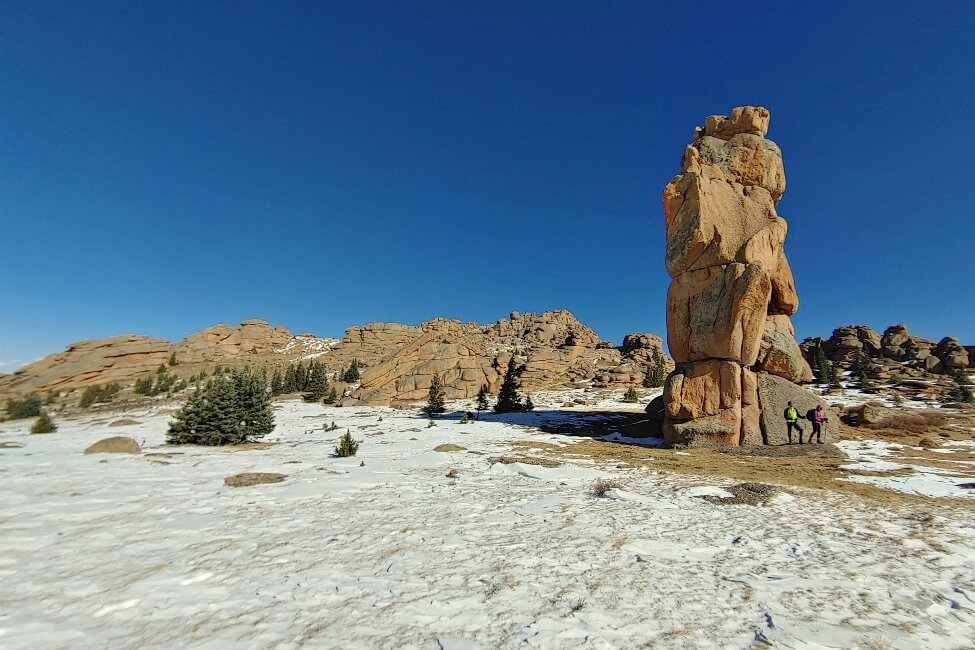
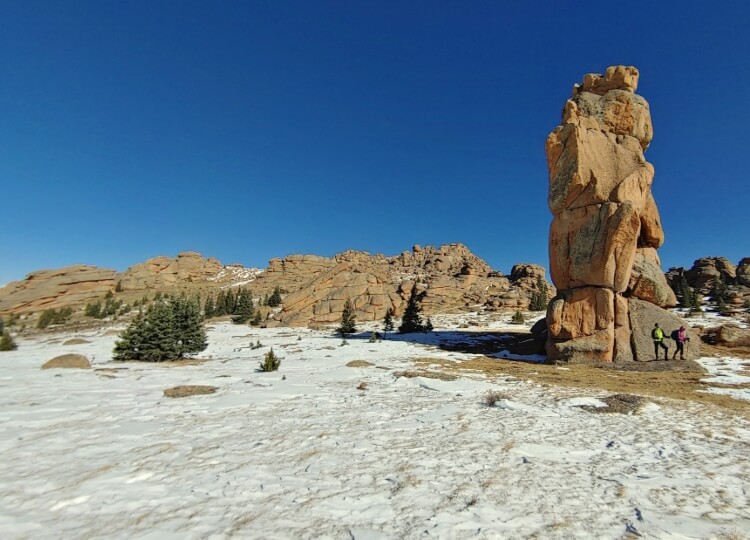
Brookside-McCurdy Trail leads to within a half-mile of the top of this 12,431-foot mighty mountain, which is the highest peak in the Tarryall Mountains of central Colorado. The 360-degree view won't disappoint anyone who reaches this Park County summit, and you'll pass a hundred-foot-tall spire along the way. I've never seen anything quite like that beaming tower in all my Colorado travels. If you're backpacking instead of day hiking, consider bagging nearby 12,168-foot McCurdy Mountain two miles to the southeast. It's the Tarryall Mountains' second-highest summit.
2. EMERALD PEAK
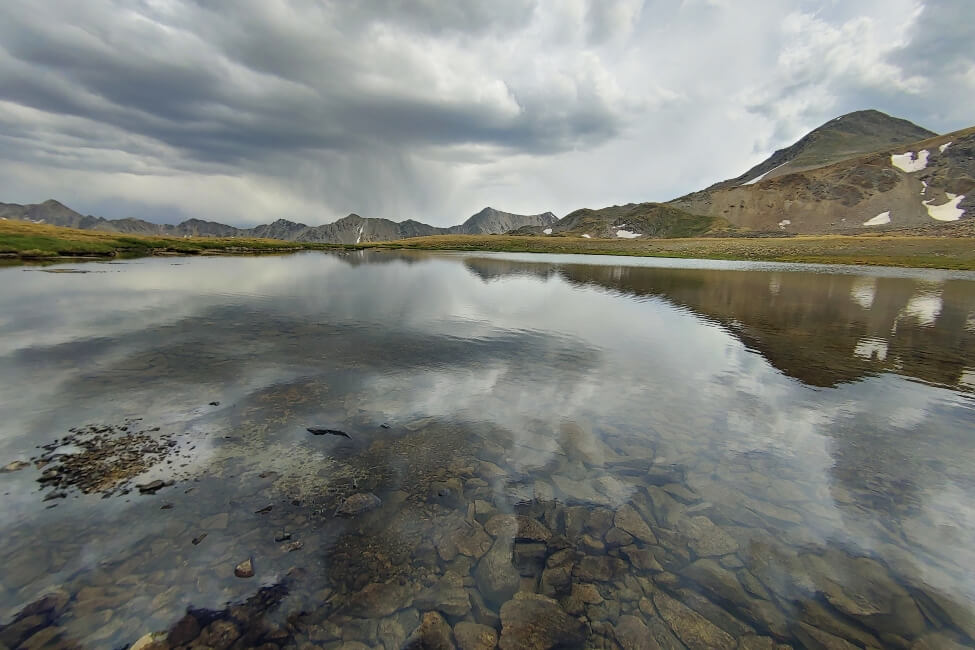
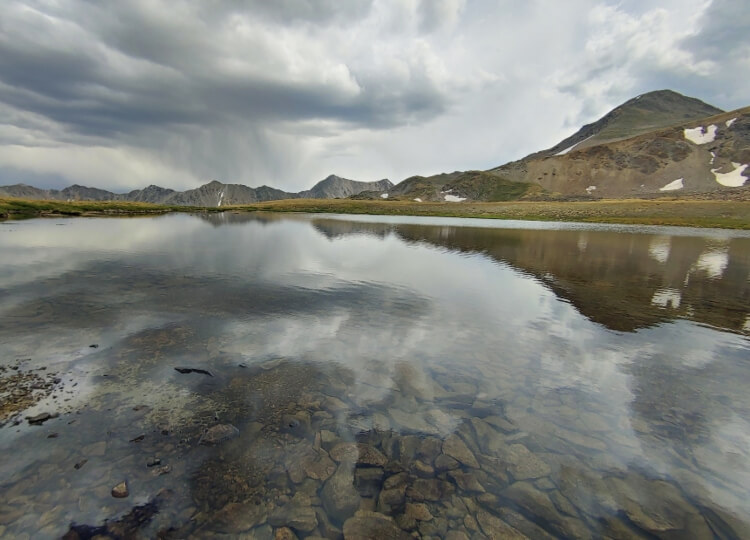
While climbers crowd each other on 14,067-foot Missouri Mountain, 14,153-foot Mount Oxford, and 14,196-foot Mount Belford, head off-trail across tundra for a mile to this nearby peak where solitude is pretty much guaranteed. Sure, Emerald Peak of Chaffee County of central Colorado falls 86 feet short of the sacred 14,000-foot-level, but who cares? Not me. The glacial tarns on this peak's gentle eastern slopes make this area one of the most visually-appealing spots in the state.
3. HORN PEAK
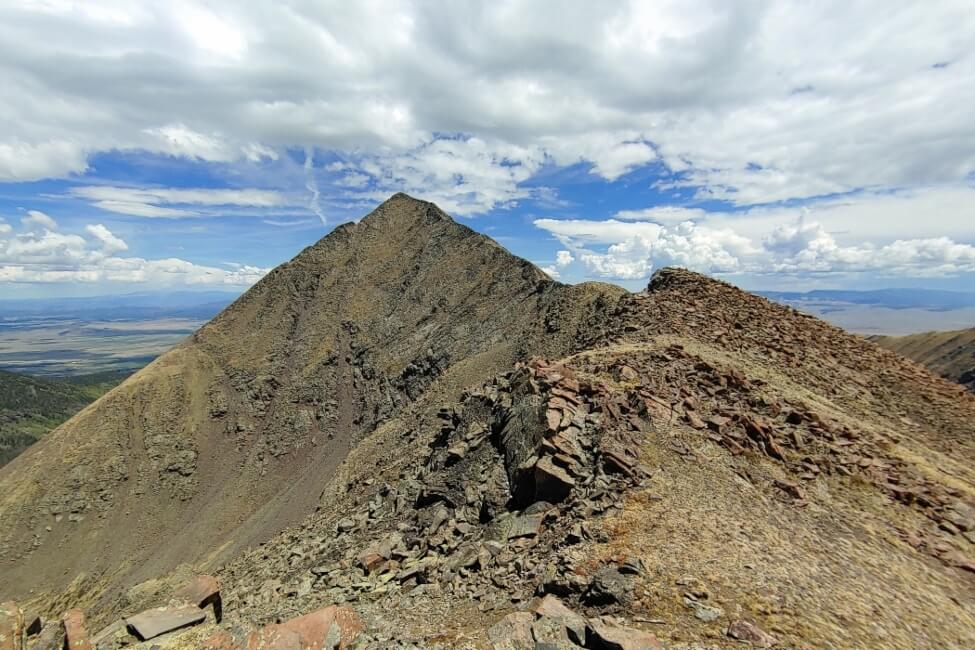
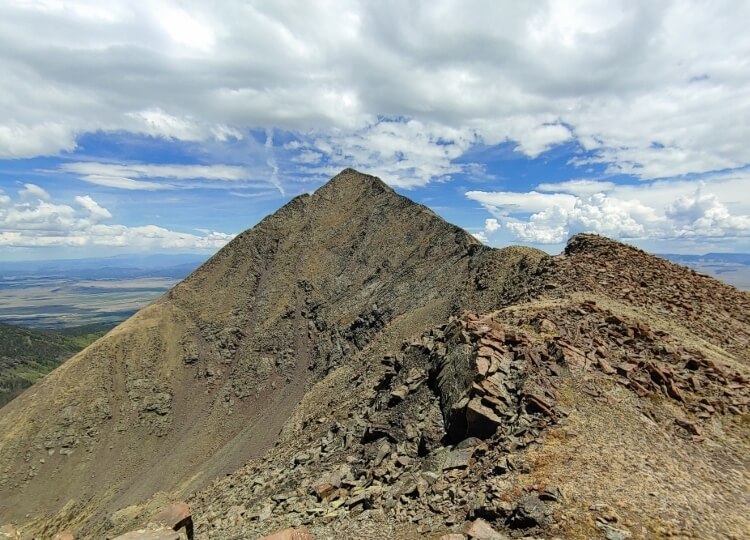
Owing its name to its distinctive shape, 13,450-foot Horn Peak of Custer County of south-central Colorado hunkers within the mighty Sangre De Cristo Mountains, a range that stretches 240 miles from northern New Mexico to central Colorado. Though Horn Peak looks nearly unclimbable from afar, especially when gazing at it from the west, this trailless mountain proves rather mild-mannered once you're upon its sides.
4. HORSESHOE MOUNTAIN
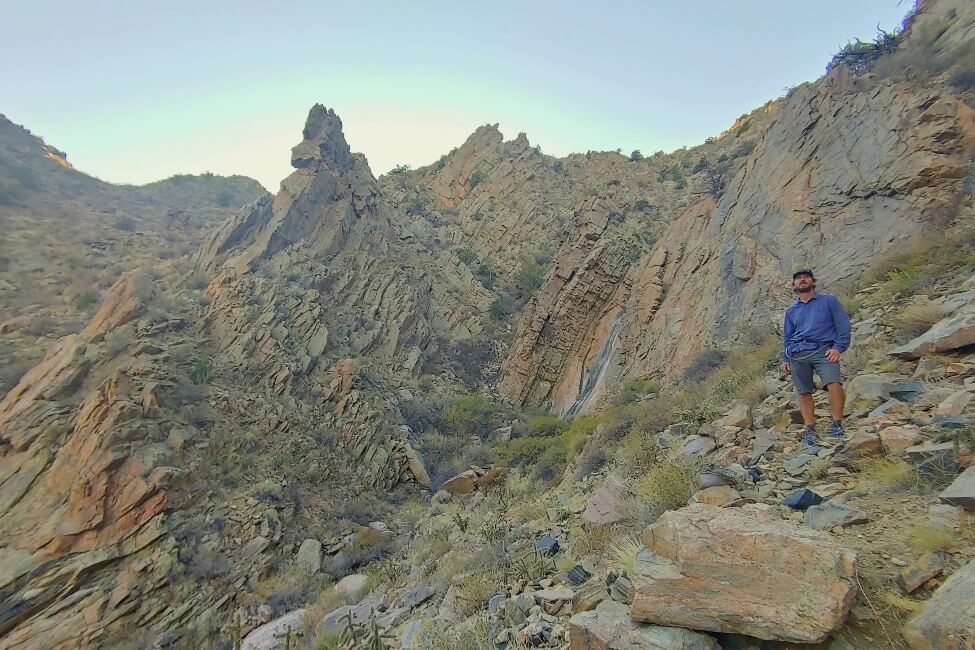
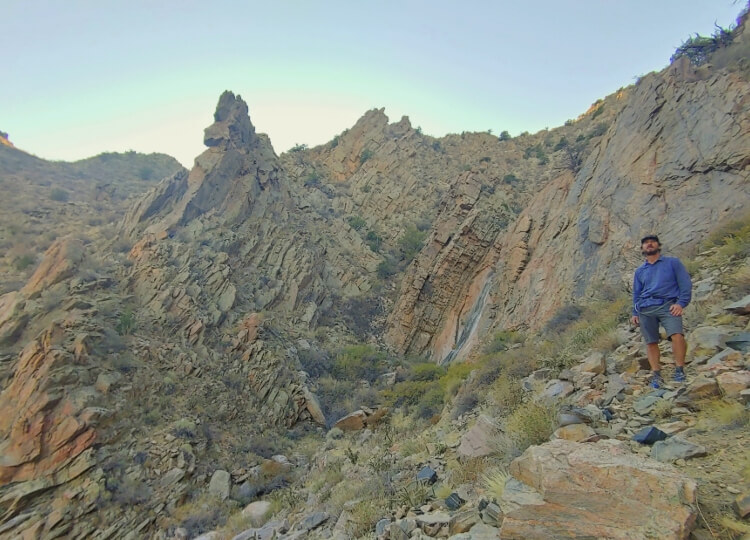
This exceedingly rugged mountain is, mile-for-mile, one of the most challenging peaks I have climbed. Its flanks are guarded by thick pine forests and cliffs, while its narrow ridgelines are choked with vicious cholla cactuses and loose boulders. While descending the east side of this trailless peak of Fremont County of south-central Colorado my climbing partner and I stumbled upon a stunning slot canyon that made our struggles worthwhile.
5. LONG TREK MOUNTAIN
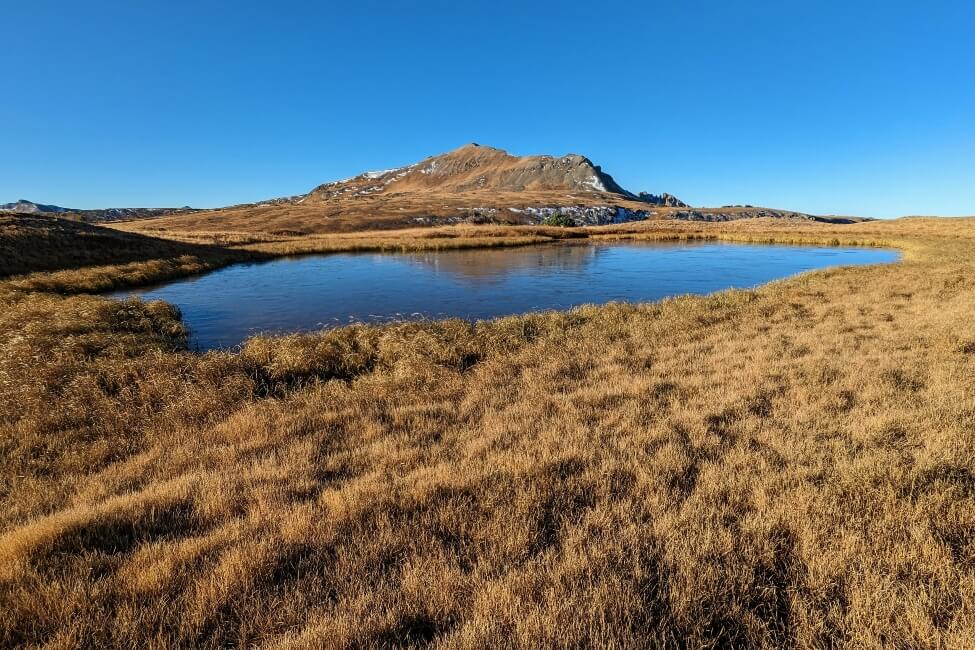
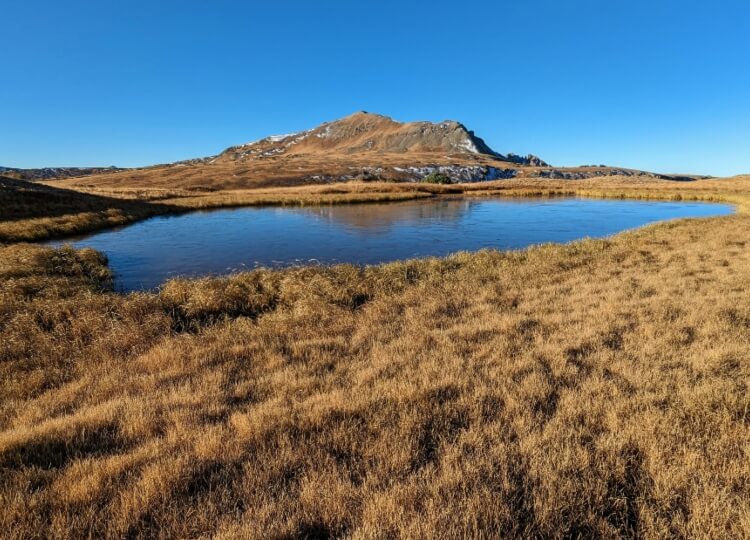
The trek to this 12,866-foot mountain isn't as long as the name may suggest. This Archuleta County peak can be day hiked with ease. A trail doesn't lead to the tippy-top of this southwest Colorado peak, but it's only a quarter-mile climb up its southeast ridge if approaching it via the Continental Divide National Scenic Trail, a 3,200-mile path that runs all the way from Canada to Mexico.
6. MOUNT MASSIVE
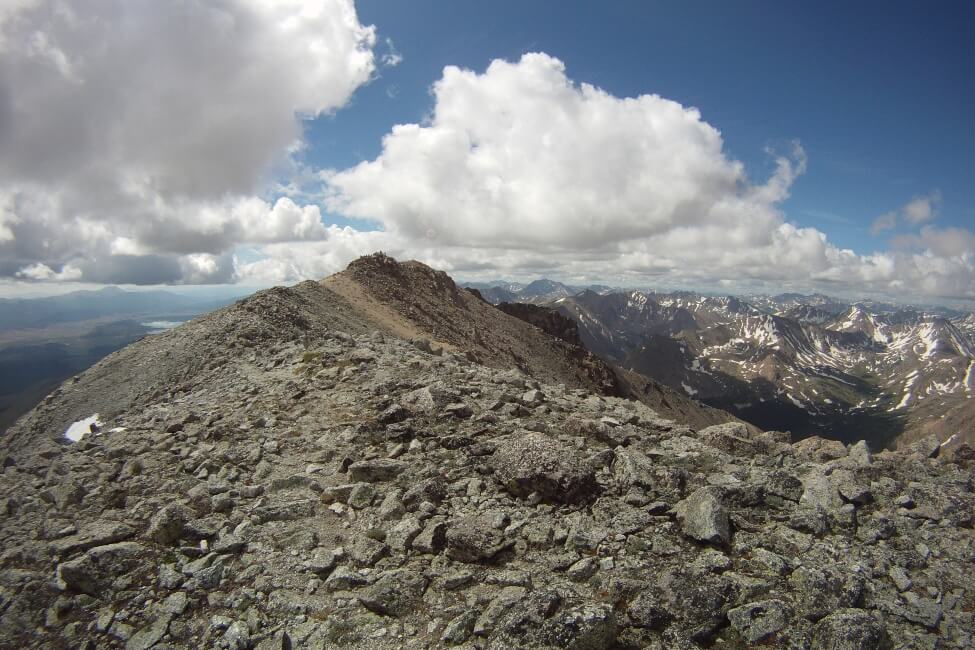
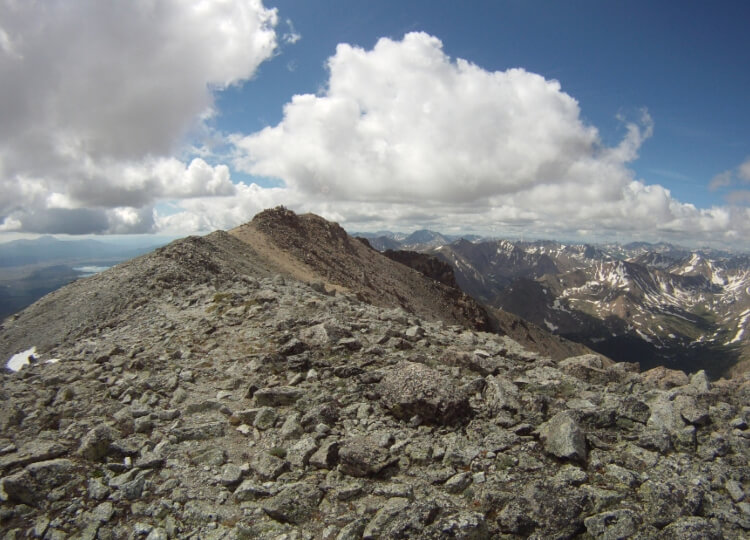
The name is descriptive. The name is accurate. Being ranked Colorado's second-highest mountain behind 14,443-foot Mount Elbert, 14,421-foot Mount Massive of Lake County has more area above 14,000 feet than any other summit in the Lower Forty-Eight. It holds more than 200 acres above that elevation. Drop down to the 13,800-foot-level and the mountain has more than 500 acres above that elevation. The first recorded ascent was completed in 1873 by surveyor Henry Gannett and his team. This mountain can be tackled via a thirteen-mile loop hike on very well-traveled trails.
7. MOUNT SILVERHEELS
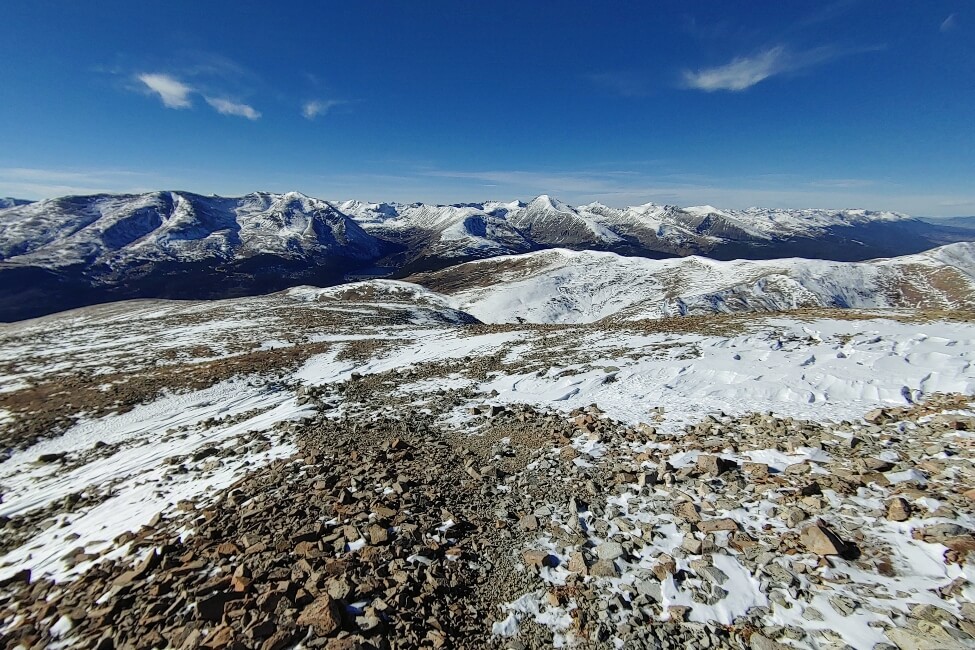
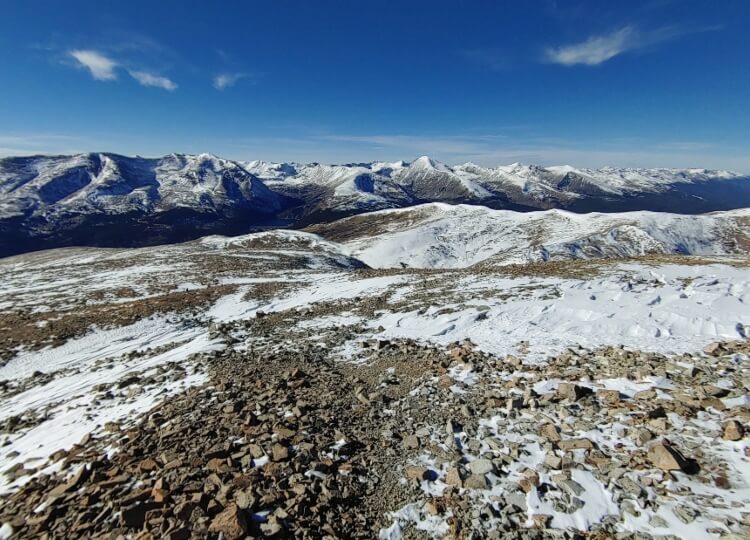
This 13,822-foot mountain of Park County doesn't have a trail to its top but is summited often since it's ranked one of the state's one hundred highest peaks. The view west is absolutely stunning. A series of 13,000- and 14,000-foot peaks serrate the skyline like a great saw. The southern approach over 12,517-foot Palmer Peak is an added scenic bonus. Location is central Colorado. This unique name honors a local woman who wore shoes with silver heels and worked as a nurse in a Colorado mining camp during a smallpox epidemic.
8. NORTH STAR MOUNTAIN
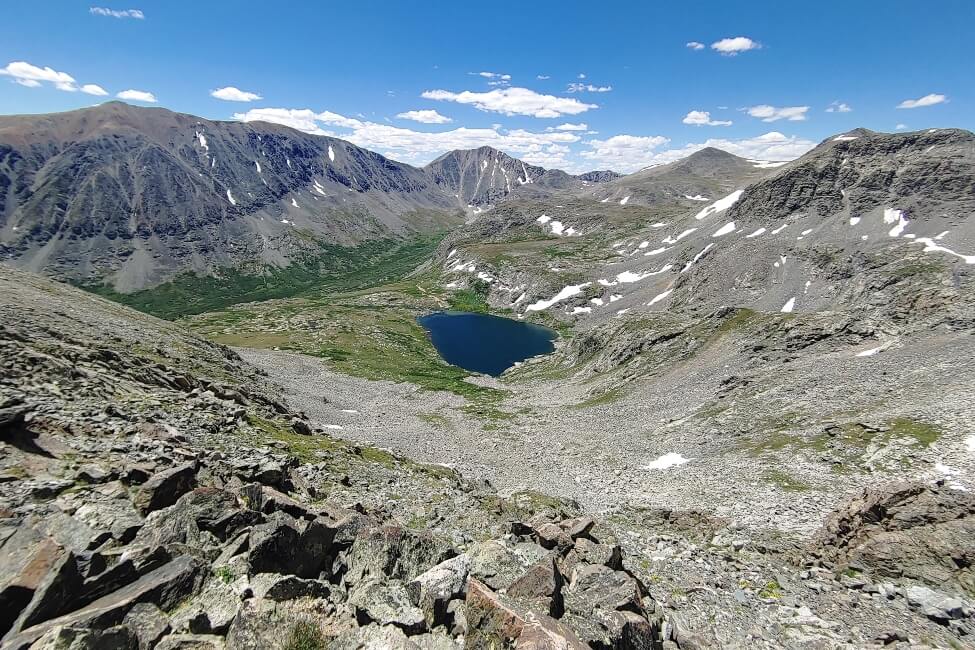
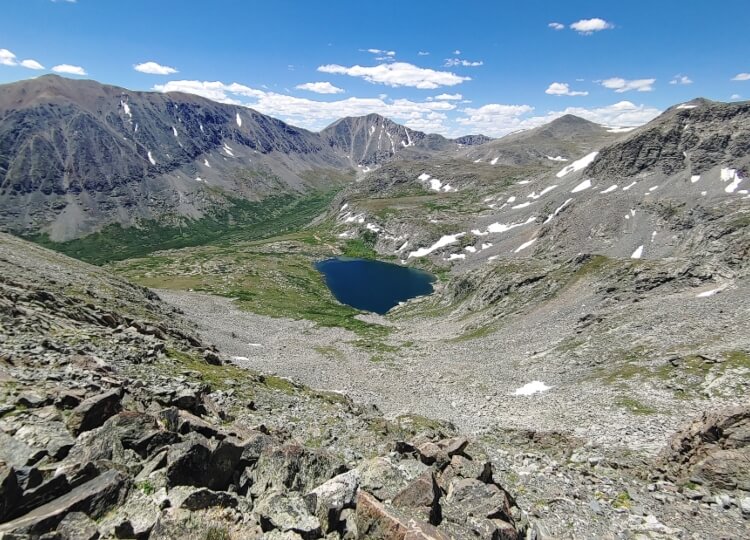
13,614-foot North Star Mountain is just the way I like my peaks – trailless, scrappy, and wild. Like all mountains, this one is objective enough to take anyone's life. During January 2022, two snowshoers and their dog were caught in an avalanche on this peak's eastern flank at 11,800 feet and killed. The slide measured 100 feet long, 370 feet wide, and up to 10 feet deep – 370,000 cubic feet of snow. The Colorado Avalanche Information Center's warning at the time of this tragedy read in part, "Recent widespread natural avalanche activity tells us that conditions are dangerous. You can easily trigger an avalanche large enough to bury or kill you." At least six others have died on North Star Mountain, though it is less objectively dangerous than many other Colorado peaks. It's located in central Colorado, and the Park/Summit county line splits its summit.
9. SAINT VRAIN MOUNTAIN
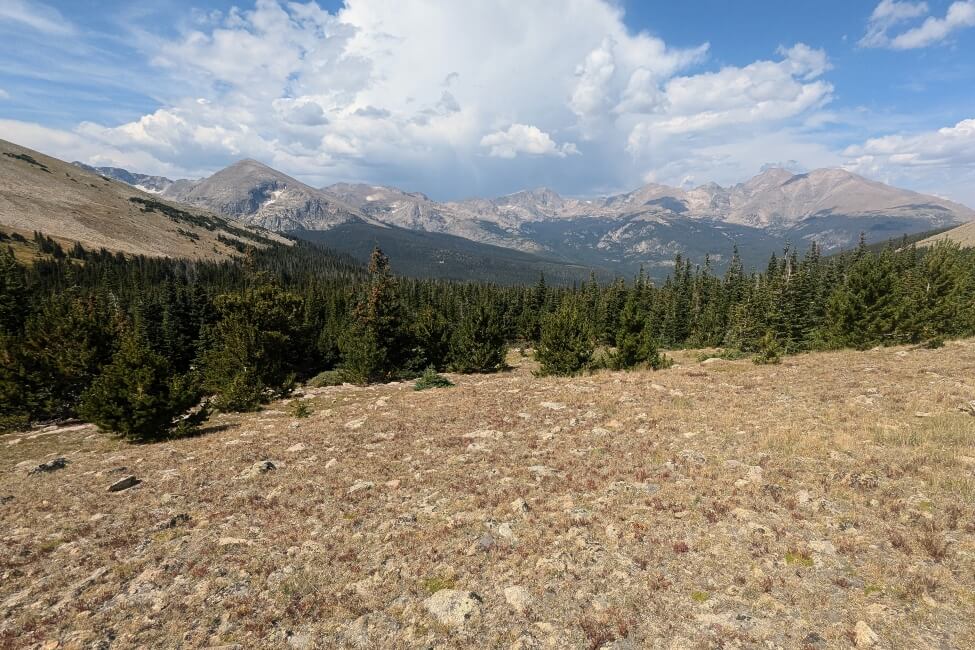
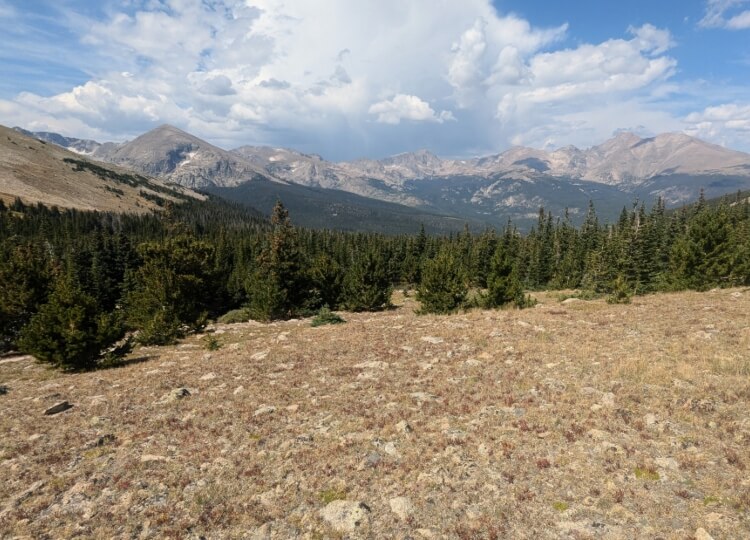
This 12,162-foot mountain of north-central Colorado is the perfect alternative for someone who wants all the scenery of Rocky Mountain National Park without any of the crowds actually inside the park. On the way to the top of this Boulder County summit one walks directly on the southern border of Rocky Mountain National Park. Bonus points to anyone who grabs nearby 11,632-foot Meadow Mountain. Bagging both peaks in one day makes for a long day. A faint trail leads to the top of Saint Vrain Mountain but Meadow Mountain remains trailless.
10. SOUTH PIÑON HILLS
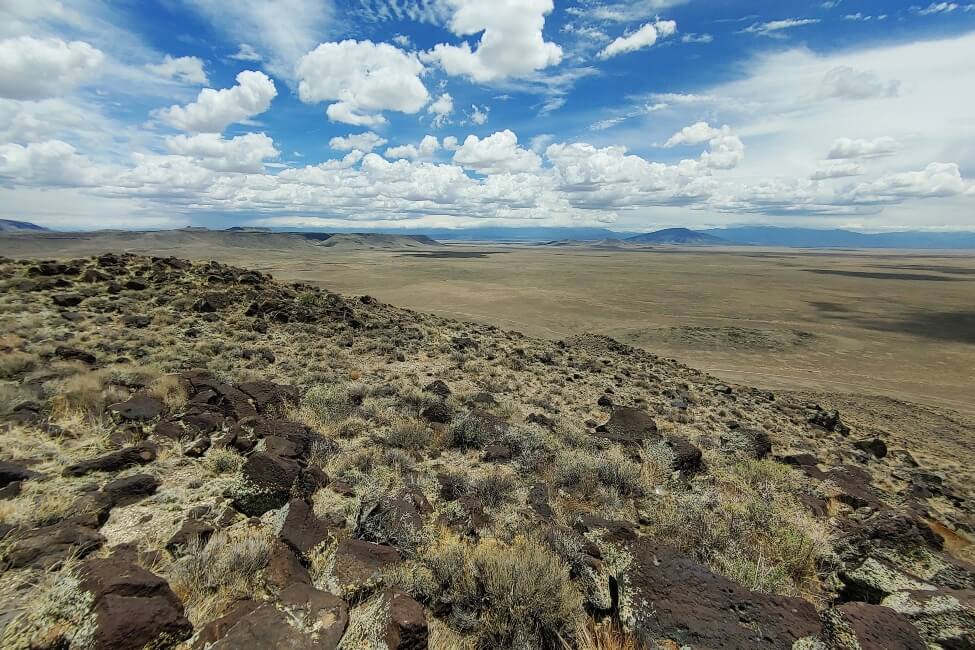
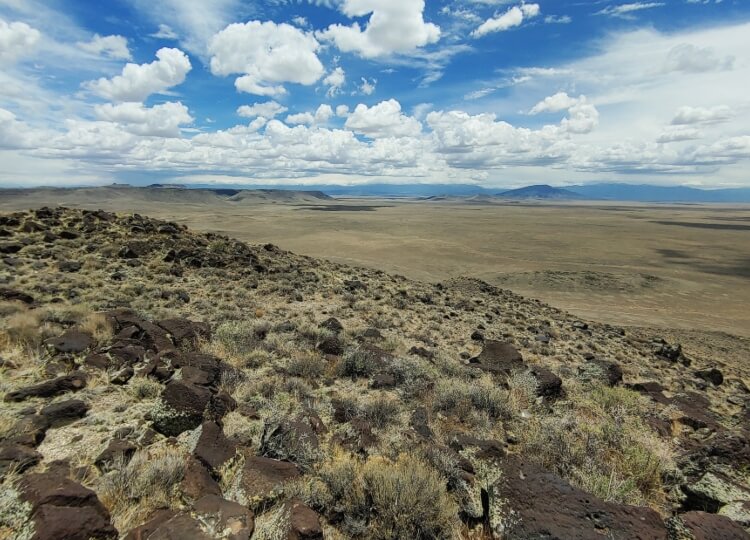
Located a few miles from the northern border of New Mexico, South Piñon Hills of Conejos County contain five qualifying peaks that range from 8,147 to 8,703 feet. All are located in the hinterlands and can only be effectively approached via four-wheel-drive vehicle. None of the five have trails to their tops, but navigation is easy since there are no trees to shield your views across this broad upland plateau.
